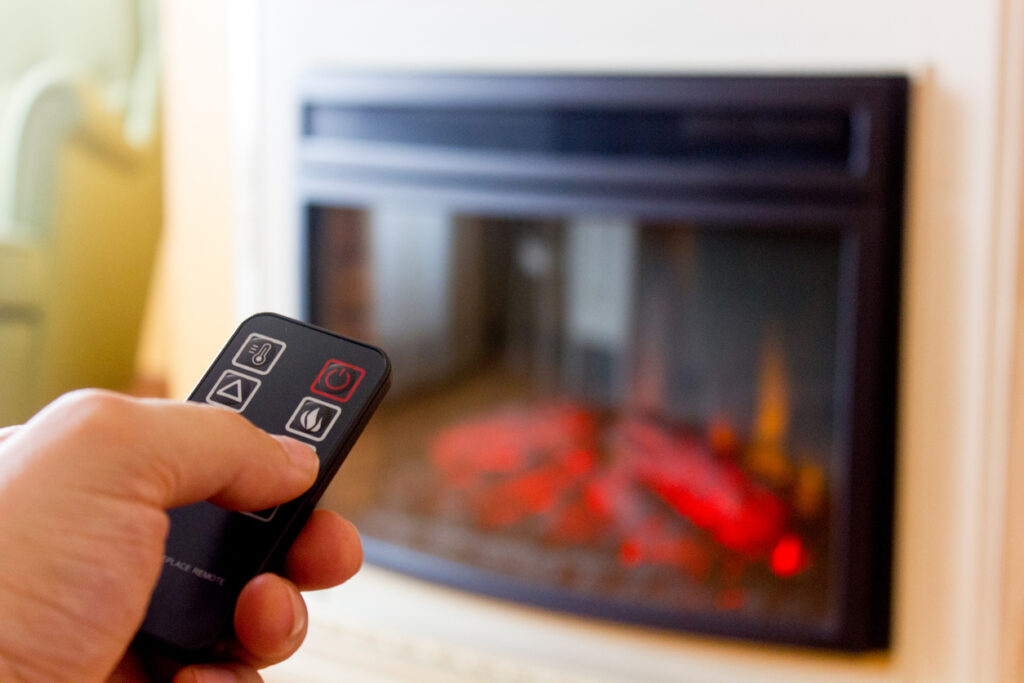
Introduction – The Real Cost Behind the Warmth
When choosing a fireplace, most people start with one question: Which is cheaper — gas or electric? But the real answer depends on more than just the upfront price. It’s about efficiency, safety, aesthetics, and long-term value — the things that truly define comfort in a modern space.
At CG Outdoor & Fireplace, we’ve worked with countless homeowners and designers who faced the same dilemma. Let’s break it down clearly, so you can make a smart decision for your home or project.
Understanding the Basics: Gas vs Electric Fireplaces
A gas fireplace uses natural gas or propane to produce real flames. It provides instant heat, a natural look, and often works even during power outages.
An electric fireplace, on the other hand, uses a heating element and LED flames to simulate a fire. It’s plug-and-play simple — no venting, no chimney, and no gas line needed.
While gas offers realism and high heat output, electric wins in simplicity and flexibility.
Installation and Initial Investment
Installation is where the term affordable often gets complicated. Electric fireplaces are generally easier and less expensive to install, requiring only a standard outlet.
Gas fireplaces usually need a professional installation, venting, and a gas connection, which increases both time and cost.
According to HomeAdvisor, electric models tend to have significantly lower installation requirements than gas versions. However, as many of our clients note, the real flame experience of gas fireplaces often justifies the higher investment for main living spaces or hotel lobbies.
Energy Efficiency and Running Costs
Here’s where numbers can get misleading. A gas fireplace delivers powerful heat output, ideal for large or open rooms, but part of that heat escapes through venting. As Energy.gov explains, traditional vented gas fireplaces typically lose 20–30% of their heat through exhaust.
Electric fireplaces, by contrast, convert nearly 100% of electricity into heat in the room. Their efficiency makes them suitable for smaller or well-insulated spaces. Still, the final cost depends on local energy rates and usage time, which can vary widely.
The simplest rule: if you want higher output and a real flame, gas delivers. If you prioritize energy efficiency and predictable utility costs, electric wins.

Maintenance, Safety, and Environmental Impact
Maintenance is another major difference. Gas fireplaces require annual inspections to ensure proper venting and safety, as they involve combustion. Modern systems include automatic shutoff valves and oxygen sensors to protect users.
Electric fireplaces are nearly maintenance-free. There are no vents, soot, or combustion residues. In addition, electric units can run on renewable power, making them a strong choice for eco-conscious homes or LEED-certified projects.
According to Angi, homeowners who prefer low-maintenance heating often find electric models more convenient for secondary or decorative heating zones.
Design Flexibility and Aesthetic Appeal
This is where both styles shine differently. Gas fireplaces create real, dynamic flames — perfect for central installations like suspended or panoramic models. Our CG designs such as the Plato Suspended Fireplace and Vulcan Freestanding Fireplace highlight this natural drama.
Electric fireplaces, like our Aero Linear Series, fit best in compact or minimalist environments — hotel rooms, apartments, or offices where easy setup and modern aesthetics matter most.
Some designers combine both in one project: gas in public areas, electric in private suites. This blend balances visual impact and practical comfort.
Which Option Fits Modern Projects Best (CG Insight)
At CG, we often advise clients to think beyond the upfront price.
If your project values atmosphere, durability, and authentic flame aesthetics — a gas fireplace is a timeless investment.
If your goal is simplicity, energy efficiency, and plug-in convenience — an electric fireplace will serve beautifully.
Our design team helps developers and hospitality clients select hybrid combinations, such as placing Plato gas models in open lounges and Aero electric wall units in rooms, achieving harmony between ambiance and performance.
Final Thoughts – Comfort Meets Cost Efficiency
The word affordable doesn’t always mean cheap — it means value that lasts. A gas fireplace brings authentic fire and robust warmth, while an electric fireplace offers modern comfort and low maintenance.
Ultimately, the best choice depends on your lifestyle, space, and sustainability goals.
At CG Outdoor & Fireplace, we believe warmth is more than just heat — it’s an experience of comfort, design, and peace of mind.
Explore our indoor fireplace collection to discover which solution brings the right kind of warmth to your project.
Cost and energy data referenced in this article are based on averages reported by trusted sources such as Angi, HomeAdvisor, and Energy.gov. Actual costs vary by region, energy prices, and installation conditions.



